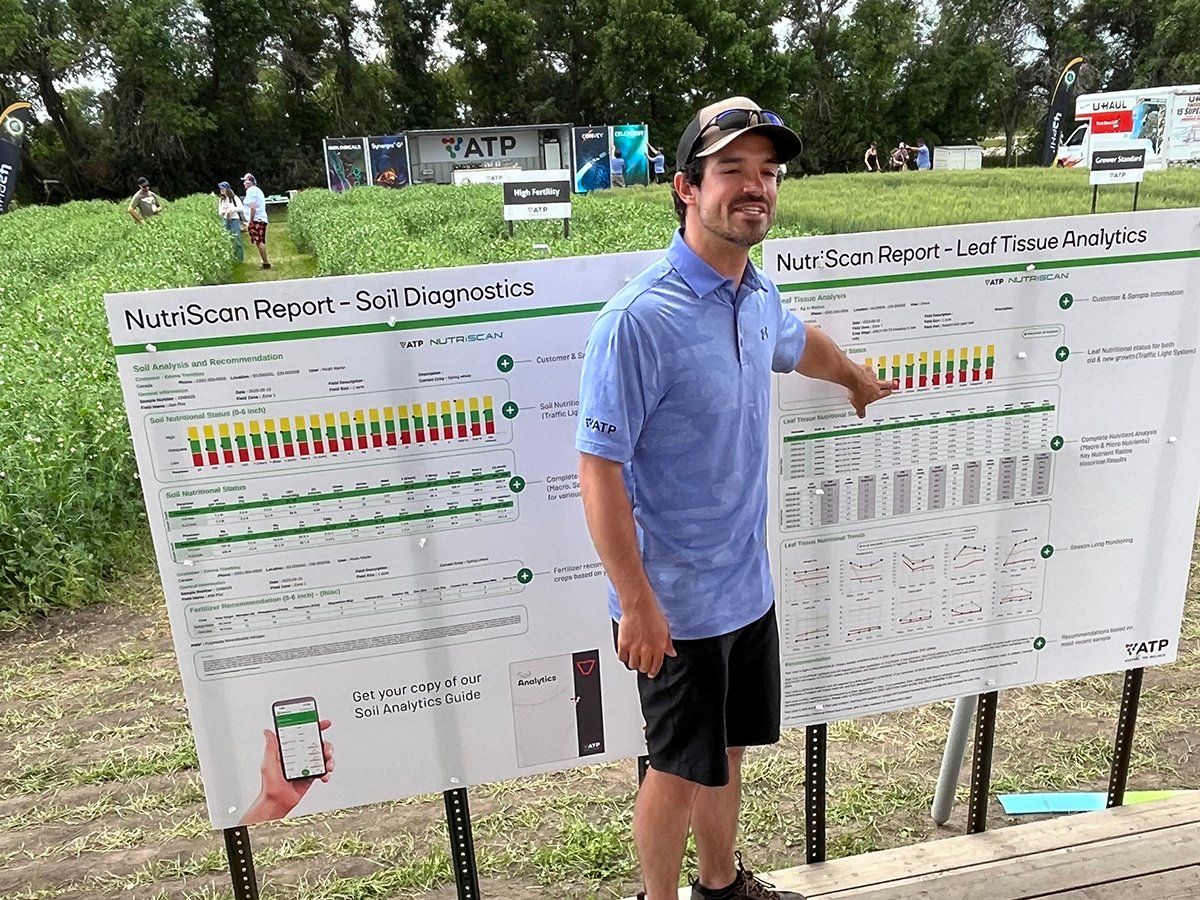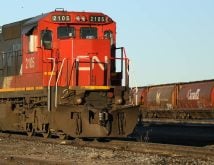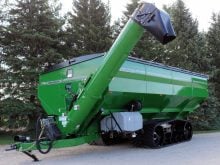Glacier FarmMedia – At the midway point of the 2023–24 transportation year, grain shipments are moving at a good clip.
“In the last 12 to 18 months, we’ve seen some really good performance from both of the railroads,” said Mark Hemmes, president of Quorum Corporation, Canada’s grain monitor, at last month’s CropConnect conference in Winnipeg.
“The exception was the last four or five weeks, and that was largely driven by the huge cold spell that came in right after the New Year.”
Manitoba got a touch of that cold spell, but Saskatchewan and Alberta got the worst of it in a two- week period when temperatures dipped as low as -50 C.
Read Also

Granular biostimulant finds fit with fertilizer
ATP Nutrition recently unveiled its new Synergro G3 as the first solid, granular biostimulant derived from a consortium of biological metabolites.
Railways always have trouble moving volumes during cold weather, Hemmes noted, and this time was no exception.
The Ag Transport Coalition’s weekly performance report for Jan. 14-21 noted that, between Canadian National Railway and Canadian Pacific Railway, only 59 percent of ordered hopper cars were filled that week, down from 88 the week before. It was the worst result since December 2022 for CN and since February 2023 for CP, but was not a surprise.
“It is a well documented fact that when temperatures reach the levels seen in week 25 (Jan. 14-21) that railway performance declines, and more often than not declines dramatically,” the report read.
“While we cannot at this time quantify the impact that this level of performance has, or will have, on grain shippers’ supply chains, it is likely that it has had some negative ramifications.”
About 77 percent of ordered cars were filled between the two railways in the week after the cold snap, before slipping to 68 percent from Jan. 28 to Feb. 4. Filled orders sprang back to 77 percent Feb. 4-11.
“It was a really good recovery,” Hemmes said. “We were thinking that it was going to take them a month to get back into shape. But it was maybe two or three weeks, and they were back up to running in pretty good fashion.”
Railways have improved their operations in the last few years, Hemmes said, but this year’s smooth sailing is largely attributable to a smaller crop.
According to Quorum’s January report, primary elevator shipments were 24.6 million tonnes in the first half of the 2023–24 crop year, 8.2 percent less than in the previous year. Wheat and canola made up the bulk of that total, at 71.6 percent.
“It’s a little easier on the railways, I think. That’s been really helpful to them to be able to move things as well as they have, even during that extreme cold weather,” said Hemmes.
Wade Sobkowich, executive director for the Western Grain Elevator Association, had a similar assessment.
“It’s been going relatively smoothly. At a high level, we’ve been getting the capacity, and sometimes more than the capacity, that we’ve needed.”
This is despite the fact that the overall hopper-car fleet declined slightly through the first half of the crop year. The fleet boasted an average of 21,867 cars, 0.6 percent less than in 2022–23.
“We had a period of time where service at the north shore of Vancouver was problematic, but it doesn’t seem to be as bad now as it was maybe a month ago,” said Sobkowich. “There have been little hiccups here and there that you always see, but nothing newsworthy.”
Hemmes was asked if volumes were light because producers were holding back in hopes that grain prices would improve. He said he didn’t see evidence of that.
At the end of December, the railways had about 35 percent of the crop, which is low, Hemmes admitted. He attributed that to price increases from both railways between August and October last year.
“Normally, at the end of December, we’d be at about 38 percent.”
While lower grain prices may not have affected volumes so far, farmers will hold out for higher prices if they can.
“That’s just the marketplace,” said Sobkowich. “It’s allowing the marketplace to do what it’s supposed to do. And it’s interesting to see how, when we do get good rail service in a year like this, basis levels narrow, and that’s good for farmers.”
Under those conditions, grain companies will try more aggressively to attract grain to their facilities, since they don’t have to worry that insufficient rail capacity will hold back shipping needs, he noted.
“They know that they’re likely going to be able to ship that grain, so they’re able to compete with each other in an unfettered way.”
Grain companies are “enjoying a very good year from a movement point of view, and we’re seeing the consequences of that,” said Sobkowich. “Grain elevators have available capacity; the number of vessels at anchor is at a lower level than what we see normally this time of year. It’s having positive effects elsewhere in the supply chain.”
Two years ago, a perfect storm hit Canada’s grain shipping industry. Storms took out bridges in the Fraser Valley of British Columbia and a lengthy polar vortex settled over the Prairies. Pressure from pandemic-driven staff shortages and related ripples further affected global supply chains.
Canada’s reputation with international grain customers took a hit, and that’s one reason Sobkowich is happy to see a good shipping year now.
“We’ve had enough happen to us in the last decade, whether it’s avalanches, fires or labour stoppages. We, as a country, have started to migrate into a reputation of unreliability.
“When you get a year like this, when you’re able to actually deliver on your commitments within the proper time windows, it goes a long way to enhance your reputation as a reliable supplier.”
There are other positive effects.
“You don’t pay vessel demurrage because you’re not waiting for grain to arrive at the port,” he noted. “You don’t have vessel congestion in the Port of Vancouver. Farmers have the ability to deliver into the elevator system because elevators aren’t plugged full of grain.
“All of those things are our positive secondary and tertiary aspects of good rail service.”
















